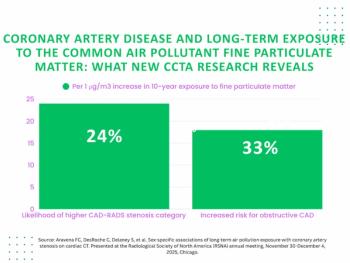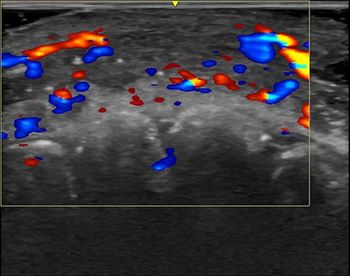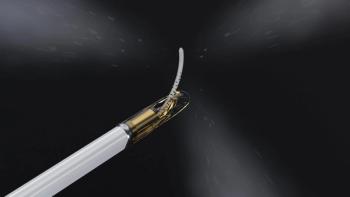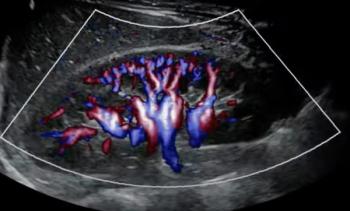
CT colonography screening picks up aortic aneurysms
Multiple studies have shown CT colonography to be just as efficacious and cost-effective as colonoscopy for colon cancer screening. Now Italian and U.S. researchers have found that CTC also does something colonoscopy cannot: simultaneously detect colorectal cancer and abdominal aortic aneurysms.
Multiple studies have shown CT colonography to be just as efficacious and cost-effective as colonoscopy for colon cancer screening. Now Italian and U.S. researchers have found that CTC also does something colonoscopy cannot: simultaneously detect colorectal cancer and abdominal aortic aneurysms.
In a proposed decision memo issued last February, the Centers for Medicare and Medicaid Services stated that scientific evidence about the cost-effectiveness of CTC screening in the Medicare population was in sufficient. CTC proponents argue that the clinical literature already includes consistent evidence about the technique's cost-effectiveness for patients aged 50 and older.
Data for the Medicare population aged 65 and older are lacking, however, according to the research group of Dr. Perry J. Pickhardt, an associate professor of radiology at the University of Wisconsin Medical School in Madison. Findings from Pickhardt's investigative team suggest that AAA detection could piggyback on colorectal cancer screening performed with CTC with no extra imaging or cost.
Pickhardt and colleagues, including gastroenterologists and radiologists from UW and the Nuovo Regina Margherita Hospital and Polo Pontino University in Rome, designed a computer model that simulated CRC and AAA development in a hypothetical cohort of 100,000 Medicare patients aged 65 and older.
The system compared costs for CTC screening at five- and 10-year intervals with those of colonoscopy screening at 10 years and no screening at all. The researchers calculated savings based on life expectancy gained from either type of screening, using a per-case cost reference of $674 and $795 for CTC and colonoscopy, respectively.
CTC resulted in 7786 and 7027 life-years gained at five- and 10-year intervals, respectively, versus 6032 life-years for 10-year colonoscopy screening. The investigators also found that prevention of AAA rupture bolstered CTC's overall efficacy, since CRC prevention and detection rates for CTC and colonoscopy were similar. All three screening strategies were highly cost-effective compared with no screening.
The incremental cost-effectiveness ratios for five- and 10-year CTC were, respectively, $6088 and $1251 per life-year gained. The ratio for 10-year colonoscopy was $1104. Results appeared in the May issue of the American Journal of Roentgenology (2009;192:1332-1340).
The study carries several limitations. Researchers assumed base costs of CTC and colonoscopy to be similar, but colonoscopy's cost could be up to five times higher than CTC's in actual practice. Unlike ultrasound, CTC is not covered by CMS for AAA screening. And the analysis did not account for the potential risk from radiation exposure.
However, according to investigators, the study posed several advantages. Initial CTC cost-effectiveness analyses have been performed from a gastroenterology perspective with little or no radiology input. In contrast, this study was a collaborative effort involving gastroenterologists and radiologists. It provided evidence that direct comparison between CTC and colonoscopy has little relevance since CTC is not intended to replace but rather to increase screening efforts. The study also reinforced the argument in favor of CTC as an alternative screening method for patients who are poor candidates for colonoscopy.
Study results suggest that, even with conservative input assumptions, CTC is a cost-effective screening option for the Medicare population, particularly considering the added benefit of AAA screening, the investigators said.
"Given the dire need for increased CRC screening among Medicare beneficiaries, we believe that CTC should be implemented as soon as possible, because it has met or has exceeded the key benchmarks achieved by optical colonoscopy and the other currently approved screening options," the researchers said.
Newsletter
Stay at the forefront of radiology with the Diagnostic Imaging newsletter, delivering the latest news, clinical insights, and imaging advancements for today’s radiologists.




























